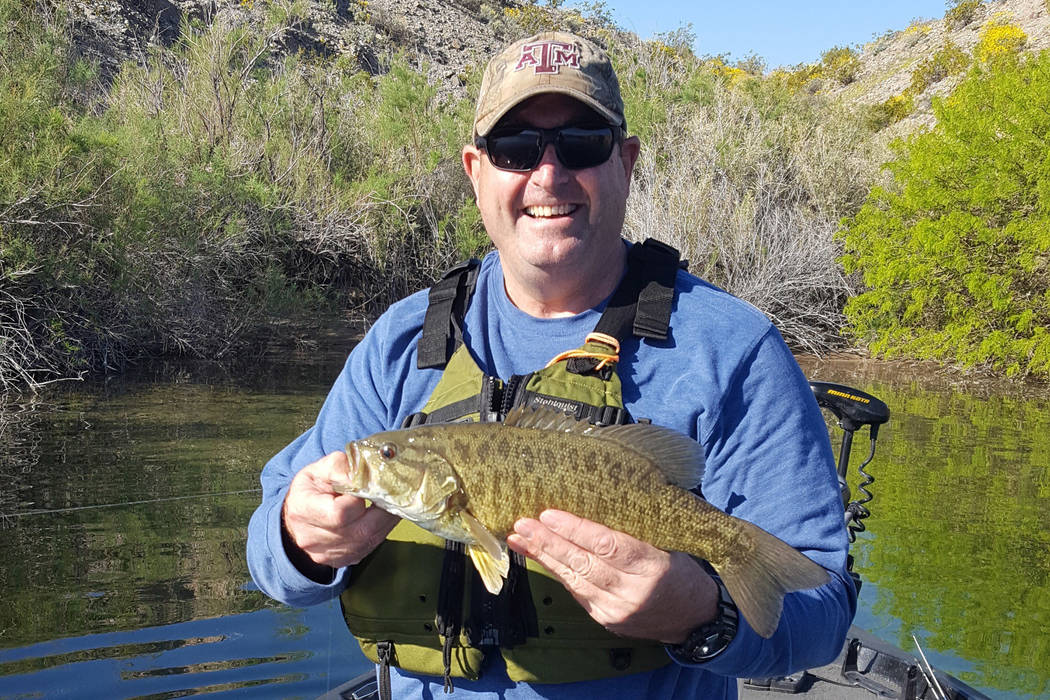Observation is key to successful fishing or hunting trips

It’s amazing how much you can learn by taking the time to observe the game you are pursuing, and it doesn’t matter whether you are watching mammals, birds or fish.
What you are looking for are habitat choices, food preferences and behavioral traits, but I’m not talking about a passing glance. I am talking about investing in the learning process. Understanding those things, and applying the knowledge you gain, will do more to improve your hunting and fishing success than the latest gadgets and technology.
My friend Roger Williams and I invested in some observation time while chasing smallmouth bass at Lake Mohave on Saturday.
The water was crystal clear, and with little wind disturbance on the surface, we could easily pick out details on the bottom of shallow coves and shelves where the fish were sticking close to beds. One of the things we learned about their beds is probably a combination of behavioral trait and habitat choice.
The beds we found were in three different location types within their choice of habitat. One location was immediately adjacent or under the edges of submerged brush. Another was at the base of a submerged tree or below a heavy branch, and the third location was on a bare slope adjacent to deep water or a drop-off.
The one thing common to each of these locations was a rocky, gravely substrate. When a male smallmouth bass prepares a nest, it uses its tail to sweep off a circle ranging in size from a couple of feet in diameter to as many as three of four, but all were easy to see against the dirt-covered areas that remained untouched.
Where you won’t find a smallmouth bass nest is in soft or silty substrate. So don’t waste your time looking there unless you are looking for something like a tilapia. According to the U.S. Fish Wildlife Service website, “Nest building occurs within 150 yards of where the male smallmouth bass built his nest the previous year.”
In one of the many coves that line Cottonwood Basin, Roger and I found three nests that were located within proximity to one another. One was under the edge of a submerged bush directly in front of us, and the other two were on the edge of deep water to our right. In all, they were separated by no more than 20 feet from one side to the other.
What’s more, they all were being guarded by one of the spawning pairs who laid eggs in the nest. Probably the male. And we could see all three fish at the same time.
It was amazing to see just how defensive of their nests these fish can be. The bigger fish were on the bed near the bush. So we took turns casting our baits into the nest, or at least as close as we could given its proximity to the bush.
Not surprisingly, the fish on that bed demonstrated defensive behavior, as did the fish guarding the other nests, even though we weren’t casting in their direction at that time.
At one point, Roger threw a jig into the nest, and one of the nearby males suddenly darted into the nest next door and grabbed the bait.
Meanwhile, the bass that was guarding the nest assumed a defensive position whenever we threw a bait into the nest. We were amazed to watch as the fish circled the bait and stopped at all points of the compass to stare it down.
Knowing these tendencies can give anglers an understanding of what might be happening below the surface when the water’s surface is disturbed, making it difficult to see what is actually happening. When you cast into a nest but can’t see what’s happening, there is a good chance the guarding fish is assuming a defensive position. When that happens, you need to exercise a little patience and keep working your bait.
Sometimes it just takes awhile before the fish gets angry enough to swallow your bait.
Freelance writer Doug Nielsen is a conservation educator for the Nevada Department of Wildlife. His “In the Outdoors” column, published Thursday in the Las Vegas Review-Journal, is not affiliated with or endorsed by the NDOW. Any opinions are his own. Find him on Facebook at @dougwritesoutdoors. He can be reached at intheoutdoorslv@gmail.com.